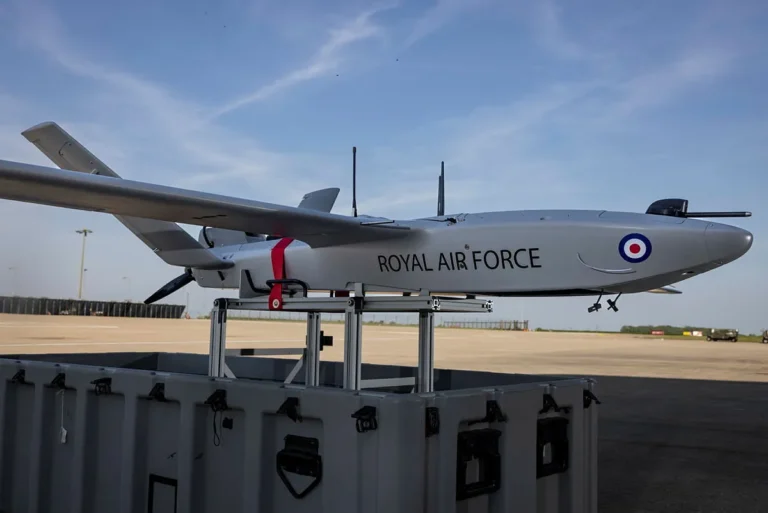Follow Us:

Share
Russia is making a bold statement at IDEX 2025, the premier defense exhibition in Abu Dhabi, by showcasing its T-90M Proryv main battle tank and Su-57 stealth fighter.
This move highlights Moscow’s ongoing efforts to secure international arms deals despite Western sanctions. With combat-tested equipment and state-backed support, Russia eyes Middle East buyers as key partners in the global defense market, particularly targeting nations historically interested in Russian military technology.

The T-90M Proryv, meaning “Breakthrough,” represents the most advanced version of the T-90 series, which itself is an evolution of the Soviet-era T-72.
Designed to compete with Western tanks like the M1 Abrams and Leopard 2, the T-90M incorporates modern firepower, armor, and electronic warfare systems.
The tank features a newly designed turret with multi-layered armor, integrating Relikt explosive reactive armor (ERA) to provide enhanced protection against anti-tank missiles and kinetic energy projectiles.

Russia has also equipped the tank with the Arena-M active protection system (APS), which detects and intercepts incoming missiles before impact, significantly increasing its battlefield survivability.
The engine upgrade to the V-92S2F diesel engine, producing 1,130 horsepower, enhances the T-90M’s speed and mobility, allowing it to reach up to 70 km/h on roads. Its Kalina fire control system features a thermal imaging channel, a panoramic sight for the commander, and a digital battlefield network, often referred to as “military Wi-Fi,” allowing real-time data sharing between armored units.
Armed with a 125mm 2A46M-5 smoothbore gun, the tank can fire armor-piercing rounds, high-explosive shells, and the 9M119M Refleks (AT-11 Sniper) anti-tank guided missile, which can engage targets up to five kilometers away.
Additionally, a 7.62mm coaxial machine gun and a remote-controlled 12.7mm Kord heavy machine gun provide added defense against infantry and drones.
One of the key improvements in the T-90M Proryv is its enhanced crew survivability. Unlike older Russian tanks, where ammunition is stored inside the main crew compartment, the T-90M places ammo in an isolated storage area, reducing the risk of catastrophic explosions if the tank is hit.
The optional Nakidka camouflage system further decreases the tank’s thermal and radar signature, making it harder to detect by enemy surveillance systems.
These upgrades have been tested in real combat situations, particularly in Ukraine, where the T-90M has demonstrated both its strengths and vulnerabilities.
Despite facing modern Western anti-tank weapons, the tank’s advanced armor and defensive systems have allowed it to remain a formidable battlefield asset.
Alongside the T-90M, Russia is also sending its Su-57 stealth fighter to IDEX 2025, highlighting its push to compete in the global fifth-generation fighter market.
The Su-57, designed as Russia’s answer to the F-35 Lightning II and China’s J-20, has been a centerpiece of Moscow’s military aviation advancements. However, despite being in development for over a decade, the aircraft has struggled to secure significant international orders.
The Su-57 features stealth technology, supercruise capabilities, and advanced avionics, making it theoretically comparable to its Western counterparts. Russia has also integrated artificial intelligence-assisted combat systems and next-generation electronic warfare suites.

However, critics argue that the limited production numbers, combined with ongoing economic challenges, have hindered its ability to achieve the same level of success as the F-35 program.
Despite these setbacks, Russia continues to promote the Su-57 as a cost-effective alternative to Western stealth fighters.
The aircraft has been showcased in China, India, and various Middle Eastern countries, but no large-scale export deal has materialized. Moscow hopes that by demonstrating the fighter’s capabilities at IDEX 2025, potential buyers from the UAE, Saudi Arabia, and other regional powers may show renewed interest.
By displaying both the T-90M Proryv and Su-57 at IDEX 2025, Russia is reaffirming its commitment to remaining a major player in the global arms market.
The Middle East has historically been a key customer base for Russian tanks, fighter jets, and missile defense systems, and Moscow sees the region as crucial for future military sales.
While Western sanctions have limited direct sales to certain countries, Russia has been increasingly exploring alternative payment systems and barter agreements to continue exporting its defense equipment.
One of Russia’s biggest selling points is that its weapons are combat-proven. Unlike some Western systems that have yet to be deployed in large-scale conflicts, Russia’s T-90M tanks and Su-57 fighters have seen action in real war zones, giving potential buyers confidence in their battlefield effectiveness.
However, Russia faces growing competition from China’s rising defense industry, which offers affordable and technologically advanced alternatives to both Russian and Western weapons.
Additionally, Turkey’s indigenous defense programs and India’s push for self-reliance in military production have further complicated Moscow’s traditional dominance in certain markets.
Despite these challenges, Russia remains resilient in its military-industrial exports, using platforms like IDEX 2025 to promote its latest hardware and secure defense contracts.
With an emphasis on battlefield-proven technology, state-backed deals, and cost-effective alternatives, Moscow aims to retain its foothold in the competitive global arms industry.
The T-90M Proryv and Su-57 stealth fighter will be key test cases for Russia’s ability to maintain its export market share in an era of increasing geopolitical tensions and economic sanctions.
Share
Defense Feeds is publication focusing on informing, engaging, and empowering the world by providing accurate information from defense technology.
Powered by Defense Feeds © 2025 – All rights reserved.